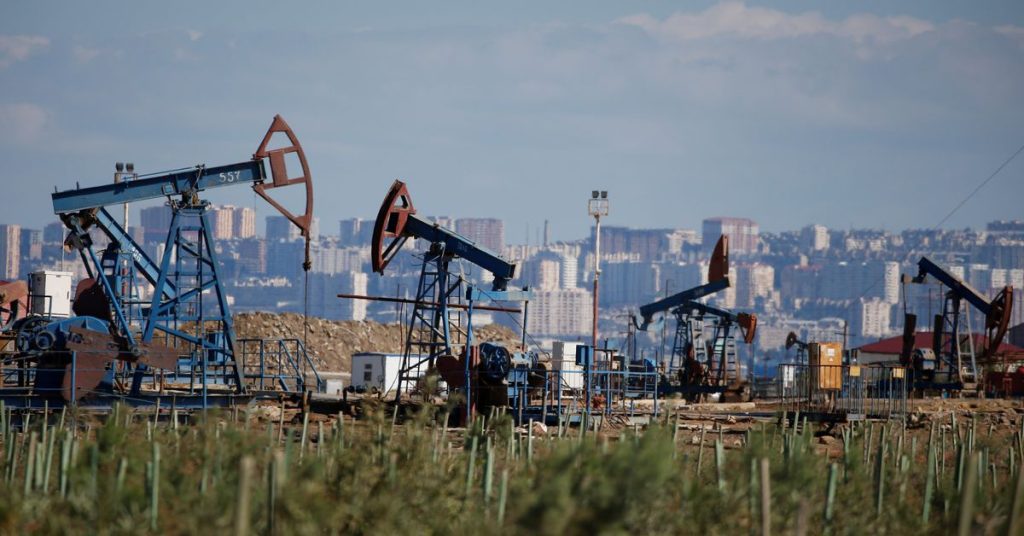
Pumping cranes pump oil into an oil field on the shores of the Caspian Sea in Baku, Azerbaijan, October 5, 2017. REUTERS/Gregory Ducor
Register now to get free unlimited access to Reuters.com
LONDON (Reuters) – Oil prices fell more than $2 before paring losses on Thursday, as investors focused on the prospect of a significant U.S. interest rate hike later this month that could stem inflation but at the same time weigh on oil demand.
Brent crude futures for September fell $1.23 to $98.34 a barrel at 1245 GMT after losing more than two dollars in the session and on their way to a third close below $100 in a row.
US West Texas Intermediate crude for August delivery was at $94.89 a barrel, down $1.41, to pare losses after dropping more than $2.
Register now to get free unlimited access to Reuters.com
Oil prices have fallen in the past two weeks on fears of a recession despite a decline in crude and refined products exports from Russia amid Western sanctions and supply disruptions in Libya. Read more
“Obviously the focus now is on the demand side of the oil equation. Yesterday’s weekly EIA report showed a significant increase in product inventories,” said Tamas Varga, analyst at PVM Oil Associates.
“The collateral damage to rising inflation fears is a strong dollar, which is also bearish for oil prices. Interestingly, physical markets remain strong but a change in financial investor sentiment is the dominant driving force currently.”
The US Federal Reserve is seen stepping up its battle with 40-year inflation with a 100bp rate hike this month after a dismal inflation report showed price pressures accelerating. The Fed policy meeting is scheduled for July 26-27. Read more
The Fed rate hike is expected to be followed by a similar surprise move by the Bank of Canada on Wednesday.
Investors have also flocked to the dollar, often seen as a safe haven asset. The dollar index hit a 20-year high on Wednesday, making oil more expensive to buy for non-US buyers.
In Europe, signs were also bearish for demand as the European Commission cut its economic growth forecast and raised the expected inflation rate to 7.6%. Read more
Concerns about COVID-19 restrictions in many Chinese cities to curb new cases of the highly contagious variant have also curbed oil prices.
Customs data showed, on Wednesday, that China’s daily imports of crude oil in June fell to their lowest levels since July 2018, as refineries expected closing measures to curb demand.
US Energy Information Administration data also indicates slowing demand, with the supply of products falling to 18.7 million barrels per day, the lowest level since June 2021. Crude stocks rose, supported by another large release of strategic reserves. Read more
On Friday, US President Joe Biden heads to Saudi Arabia, where he will attend a summit of Gulf allies and invite them to pump more oil.
However, spare capacity in the Organization of the Petroleum Exporting Countries is declining, with most producers pumping at full capacity, and it is unclear how much more Saudi Arabia can bring to market quickly. Read more
Register now to get free unlimited access to Reuters.com
Covering by Julia Payne in London. Editing by Kirsten Donovan and Jason Neely
Our criteria: Thomson Reuters Trust Principles.





More Stories
“Recycling – Changing the water heater”: the possibility of paying the financing to the institution once or partially
Libya: US General Meets Haftar Amid Tensions Between Governments
New tax exemption package and incentives for business and corporate mergers..